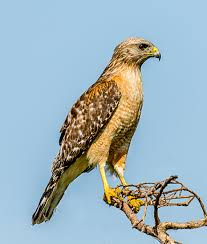His for Hawk
ideas
Macdonald is describing the moment that she meets the animal that she is about to train for the first time. She seems scared of the larger bird and she decides that she would like to train the one the man brought out first.
context
Falconry is the training of a large bird of prey.
author’spurpose
Helen Macdonald became an experienced falconer (bird handler) after the death of her father. She was attempting to accept his death and felt she needed a new hobby.
Whilst the writing is non-fiction, it reflects fiction writing. It seems to be imaginative and creative. She is not just simply informing us of falconry.
language
Short sentences
Note the large number of short, simple sentences one after another:
‘My heart jumps sideways. She is a conjuring trick. A reptile. A fallen angel. A griffon from the pages of an illuminated bestiary. Something bright and distant, like gold falling through water.’
It is unusual for their to be so many short sentences one after another. This creates tension throughout the piece and highlights the sense of expectation within the extract at seeing the animal.
Jargon
Jargon is technical language. It is used by a group of people who have the same interest to describe specific events and moments:
Hackles: small feathers at the back of the neck
Primaries: large feathers at the ends of the wings.
This shows her understanding of the topic and that she is not a beginner. She understands the animals.
Dialogue
There is very little dialogue within the extract; however, towards the end of page one; ‘‘Let’s get that hood back on,’ he said tautly’. This reflects the ‘calm’ atmosphere that is outlined in the paragraph and contrasts with the tense nature of the prior paragraphs.
structure
Macdonald describes how she was unhappy with the birds and how she wishes to return to the larger bird. It is interesting how she uses a one line paragraph: ‘Oh’. It is almost narrative and becomes a story. It feels as though she is not recounting an event but creating an event.
Imagery
Within the extract, there is much imagery:
‘The hawk’s wings, barred and beating, the sharp fingers of her dark-tipped primaries cutting the air, her feathers raised like the scattered quills of a fretful porpentine’
Alliteration is the repetition of a consonant at the beginning of words that are placed together. With alliteration, it is important to consider the sound and whether it is harsh or soft. Here the ‘barred and beating’ creates a harsh image of the bird.
A simile is also used. A simile compares one object to another. It is interesting how she compares one harsh animal to another. This seems to emphasise the fear we should feel for the animal.
examquestions
Within your examination, you will be asked a series of questions about the article.
Some of the questions will be short questions. For these questions, you must look at the number of marks in brackets. It is important to answer in full sentences.
Other questions will be long questions. For these questions, you must look at using analysis. You will also be asked to compare. Think carefully about the key comparisons and plan your answer first.
Assessment features are __coming soon: ____check back here in the next few days for the opportunity to ____unlock assessment ____and access ____teacher-written questions ____with ____model answers.
- Consider the bird in the incubator. What had the man fed the bird?
- meat
Explanation: The man fed the bird scraps of meat held in tweezers. - Describe the boxes in the second paragraph
- Your answer should include: parcel-tape handles / doors of plywood / hinges tied with string
Explanation: The boxes had parcel-tape handles, doors of plywood and hinges tied with string.
